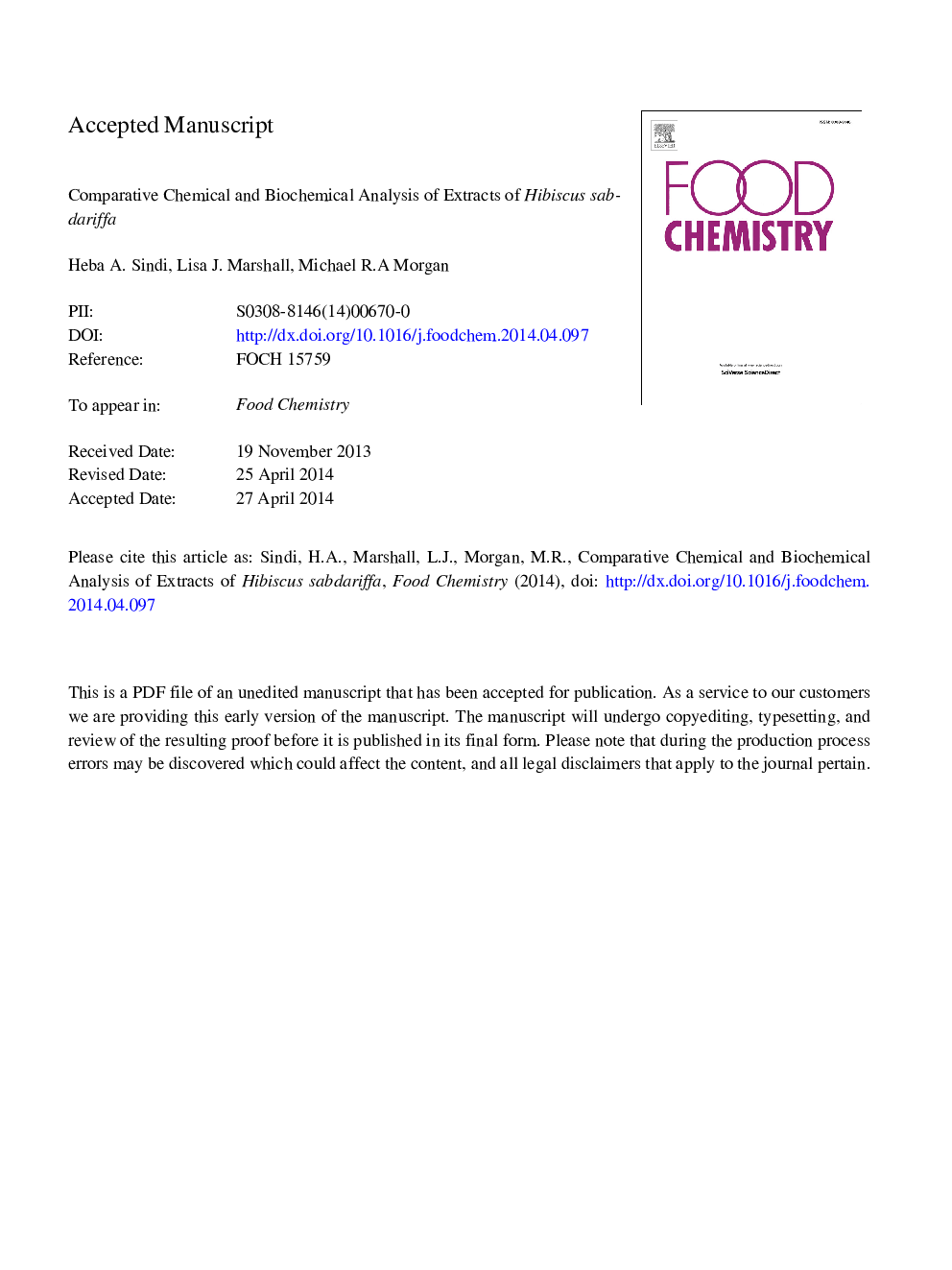| Article ID | Journal | Published Year | Pages | File Type |
|---|---|---|---|---|
| 7596414 | Food Chemistry | 2014 | 27 Pages |
Abstract
Hibiscus sabdariffa extracts have attracted attention because of potentially useful bioactivity. However, there have been no systematic studies of extraction efficiencies of H. sabdariffa. The nature of extracts used in different studies has varied considerably, making comparisons difficult. Therefore, a systematic study of extracts of H. sabdariffa made with different solvents was carried out using water, methanol, ethyl acetate and hexane in the presence/absence of formic acid, using different extraction times and temperatures. The extracts were analysed for total polyphenol content, antioxidant capacity using DPPH, FRAP and TEAC assays, and specific anthocyanins were determined using HPLC and LC-MS. The results showed the highest antioxidant capacities were obtained by extracting using water, with or without formic acid, for 10 min at 100 °C. These extracts provided the highest concentrations of cyanidin 3-sambubioside and delphinidin 3-sambubioside. It will be important to use extraction conditions giving optimal extraction efficiencies for subsequent bioactivity experiments.
Keywords
Related Topics
Physical Sciences and Engineering
Chemistry
Analytical Chemistry
Authors
Heba A. Sindi, Lisa J. Marshall, Michael R.A. Morgan,
